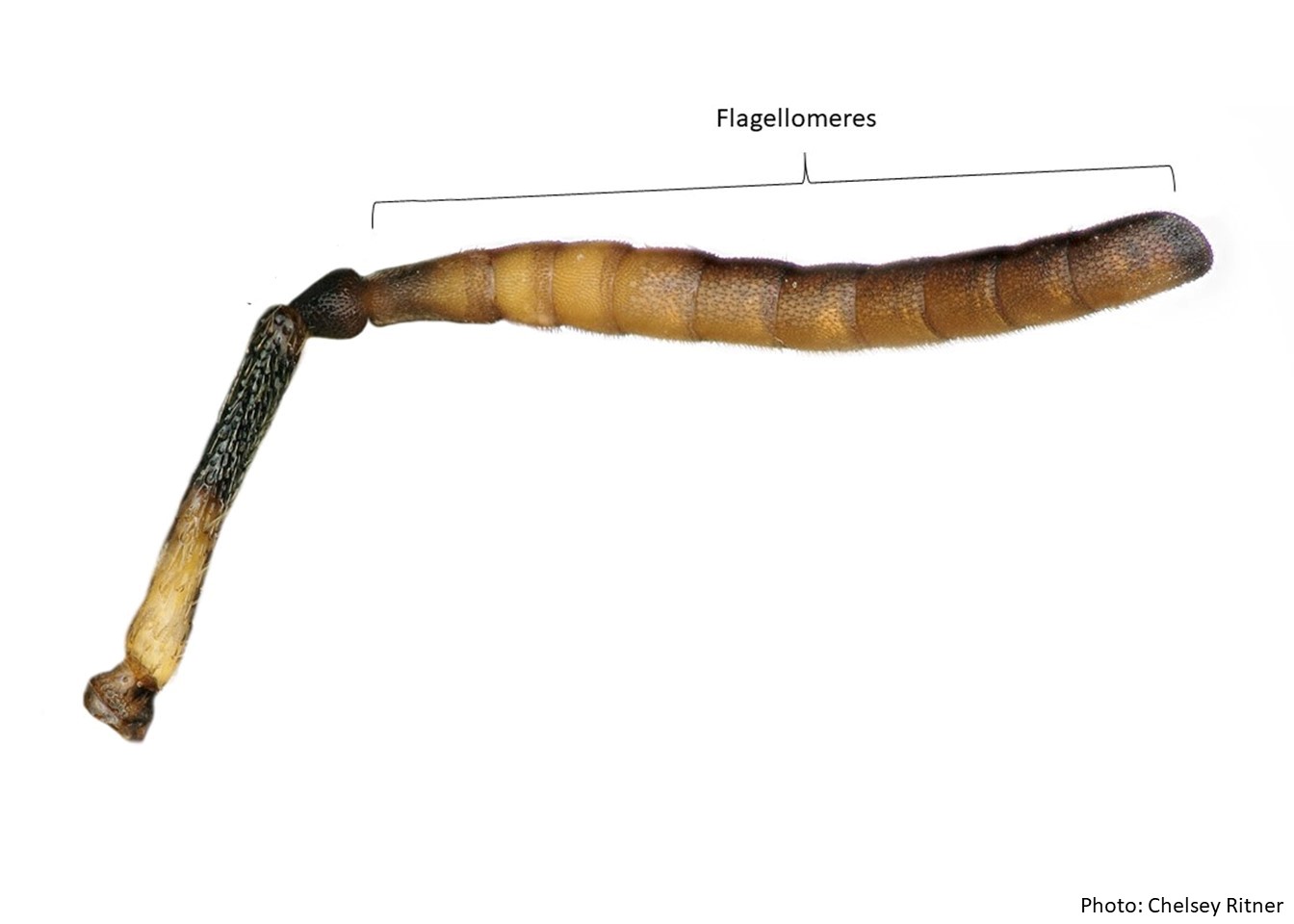Family: Megachilidae
Subfamily: Megachilinae
Tribe: Lithurgini
Genus: Austrothurgus Gonzalez and Engel, 2013
Subgenera: none
Common name: none
Austrothurgus are robust, black bees that range in body length from 10–15 mm (Gonzalez et al. 2013Gonzalez et al. 2013:
Gonzalez, V.H., M.S. Engel, and T. Griswold. 2013. The lithurgine bees of Australia (Hymenoptera: Megachilidae), with a note on Megachile rotundipennis . Journal of Melittology 11: 1ndash;19.). The head, thorax, and abdomen are generally black, and they have white to brown apicalapical:
near or at the apex or end of any structure
bands of setaesetae:
a still hair-like structure or bristle
on the tergaterga:
the segments on the top side of the abdomen, often abbreviated when referring to a specific segment to T1, T2, T3, T4, T5, T6, or T7 . T6T6:
. T6T6:
the segments on the top side of the abdomen, often abbreviated when referring to a specific segment to T1, T2, T3, T4, T5, T6, or T7 of females is covered with reddish-brown setaesetae:
of females is covered with reddish-brown setaesetae:
a still hair-like structure or bristle
(Gonzalez et al. 2013Gonzalez et al. 2013:
Gonzalez, V.H., M.S. Engel, and T. Griswold. 2013. The lithurgine bees of Australia (Hymenoptera: Megachilidae), with a note on Megachile rotundipennis . Journal of Melittology 11: 1ndash;19.).
Austrothurgus contains 3 species worldwide (Gonzalez et al. 2013Gonzalez et al. 2013:
Gonzalez, V.H., M.S. Engel, and T. Griswold. 2013. The lithurgine bees of Australia (Hymenoptera: Megachilidae), with a note on Megachile rotundipennis . Journal of Melittology 11: 1ndash;19.); none are known to occur in the U.S or Canada.
(modified from Gonzalez et al. 2013Gonzalez et al. 2013:
Gonzalez, V.H., M.S. Engel, and T. Griswold. 2013. The lithurgine bees of Australia (Hymenoptera: Megachilidae), with a note on Megachile rotundipennis . Journal of Melittology 11: 1ndash;19.)
 1.5 times longer than broad and nearly twice as broad as the second flagellomereflagellomere:
1.5 times longer than broad and nearly twice as broad as the second flagellomereflagellomere: .
. absent.
absent. present on all tarsitarsi:
present on all tarsitarsi:Austrothurgus looks like Lithurgus and Lithurgopsis, however, they can be distinguished from one another by the characteristics listed above (Gonzalez et al. 2013Gonzalez et al. 2013:
Gonzalez, V.H., M.S. Engel, and T. Griswold. 2013. The lithurgine bees of Australia (Hymenoptera: Megachilidae), with a note on Megachile rotundipennis . Journal of Melittology 11: 1ndash;19.).
There are no known invasives.
Floral associations are unknown.
Austrothurgus is endemic to Australia (Gonzalez et al. 2013Gonzalez et al. 2013:
Gonzalez, V.H., M.S. Engel, and T. Griswold. 2013. The lithurgine bees of Australia (Hymenoptera: Megachilidae), with a note on Megachile rotundipennis . Journal of Melittology 11: 1ndash;19.).
Distribution map generated by Discover Life -- click on map for details, credits, and terms of use.
Gonzalez, V.H., M.S. Engel, and T. Griswold. 2013. The Lithurgine bees of Australia (Hymenoptera: Megachilidae), with a note on Megachile rotundipennis. Journal of Melittology 11: 1-19.